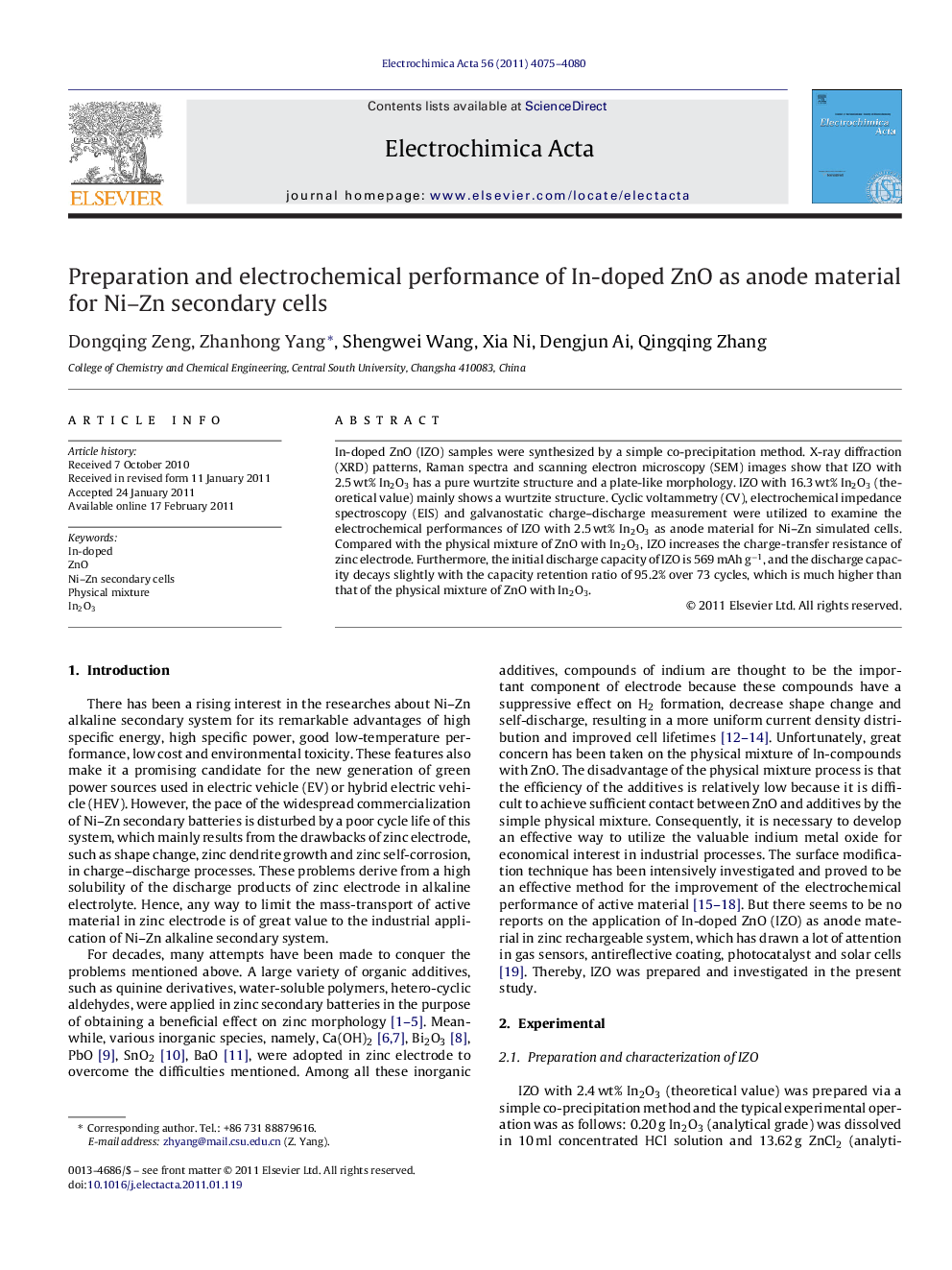| Article ID | Journal | Published Year | Pages | File Type |
|---|---|---|---|---|
| 190266 | Electrochimica Acta | 2011 | 6 Pages |
In-doped ZnO (IZO) samples were synthesized by a simple co-precipitation method. X-ray diffraction (XRD) patterns, Raman spectra and scanning electron microscopy (SEM) images show that IZO with 2.5 wt% In2O3 has a pure wurtzite structure and a plate-like morphology. IZO with 16.3 wt% In2O3 (theoretical value) mainly shows a wurtzite structure. Cyclic voltammetry (CV), electrochemical impedance spectroscopy (EIS) and galvanostatic charge–discharge measurement were utilized to examine the electrochemical performances of IZO with 2.5 wt% In2O3 as anode material for Ni–Zn simulated cells. Compared with the physical mixture of ZnO with In2O3, IZO increases the charge-transfer resistance of zinc electrode. Furthermore, the initial discharge capacity of IZO is 569 mAh g−1, and the discharge capacity decays slightly with the capacity retention ratio of 95.2% over 73 cycles, which is much higher than that of the physical mixture of ZnO with In2O3.
► In-doped ZnO (IZO) is synthesized via a simple co-precipitation method. ► IZO is utilized as anode material in Ni-Zn secondary cell. ► The electrochemical performances of IZO are studied. ► IZO delivers a high discharge capacity with good capacity retention.
